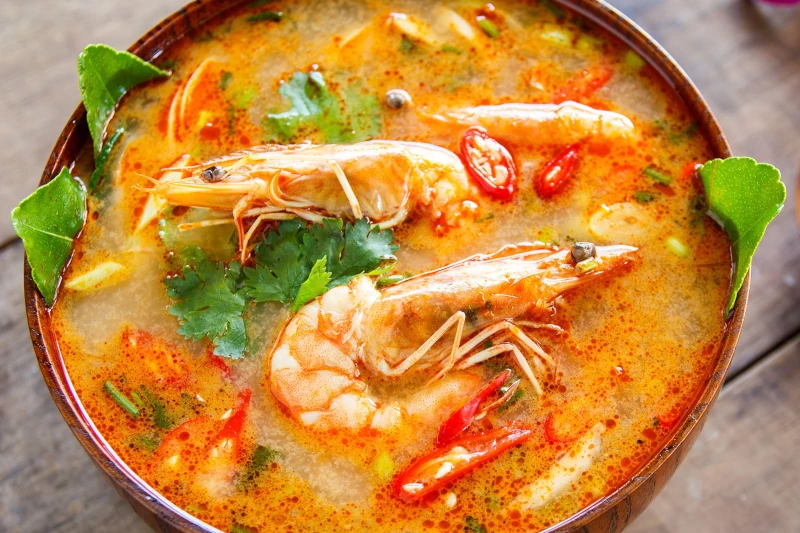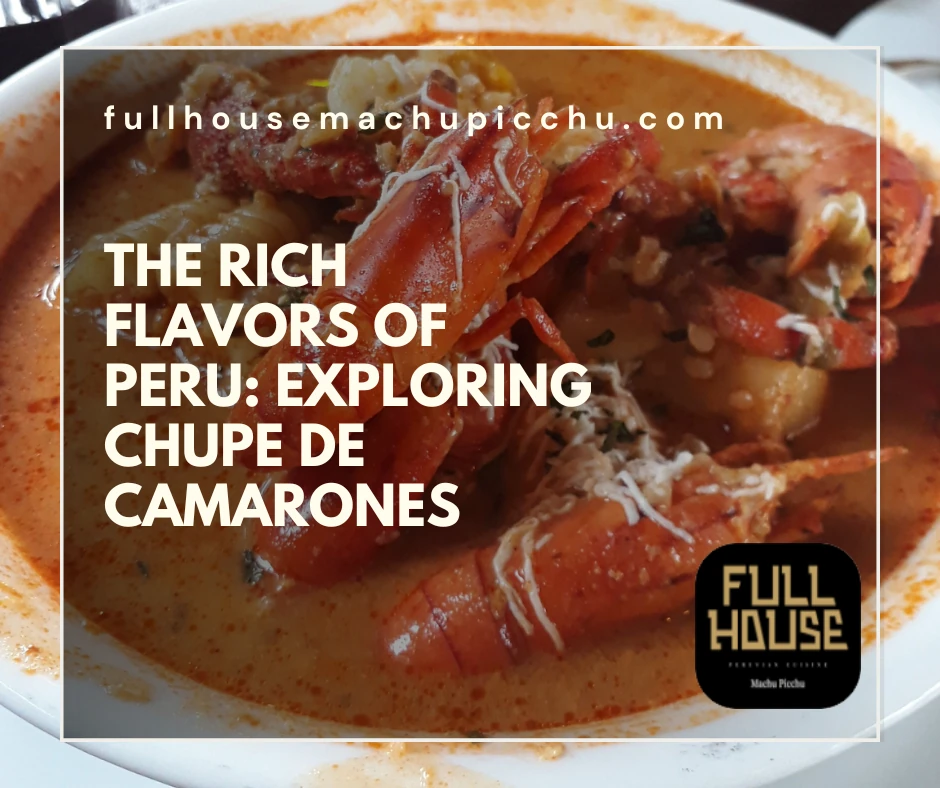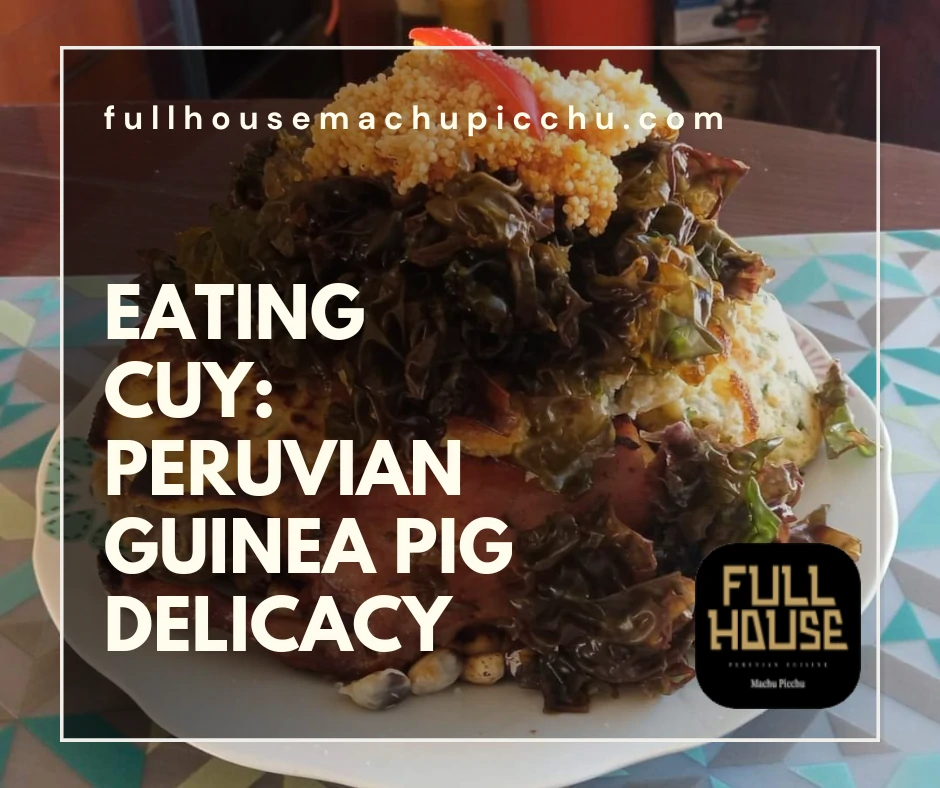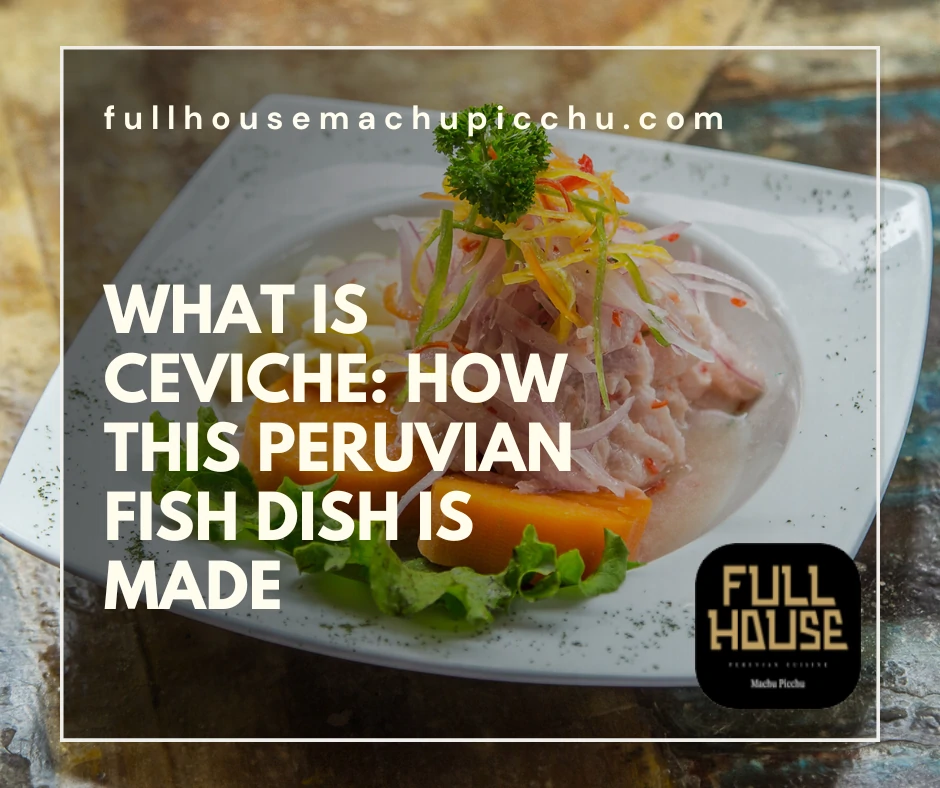Welcome to the enchanting world of Peruvian cuisine, where every dish tells a story, and every flavor sparks a journey. In this article, we’ll be exploring one of the country’s most cherished culinary treasures, Chupe de Camarones – a hearty, flavorful shrimp soup that has been warming hearts and stomachs for centuries.
Born in the regions of Arequipa and steeped in tradition, this soup boasts a rich blend of indigenous and colonial influences, transforming simple ingredients into a culinary masterpiece. Join us as we delve into the history, ingredients, and cultural significance of Chupe de Camarones, and unravel the magic that makes this dish a timeless classic of Peruvian gastronomy.
A flavorful journey through history: The origins of Chupe de Camarones
Chupe de Camarones originates from the southern regions of Peru. Specifically, the city of Arequipa lays claim to this culinary delight. Its birth, much like other traditional dishes like Rocoto Relleno, interweaves historical narratives and cultural fusion.
The evolution of this hearty shrimp soup dates back centuries. Indigenous people in the region first made it, using locally available resources. Shrimp, native to Peruvian rivers, became the primary ingredient. Other components like potatoes, maize, and cheese, found their way into the recipe.
Chupe de Camarones truly became a culinary symbol during the colonial period. Spanish influence enriched its complexity, introducing ingredients like milk and eggs. Aesthetics improved, flavors deepened, and its popularity surged.
This beloved Peruvian dish shares a camaraderie with Rocoto Relleno, a stuffed pepper dish. Both exhibit how local ingredients can create unique, globally appreciated cuisines. Also, the commitment to tradition is evident, preserving the dishes’ authenticity.
The tale of Chupe de Camarones mirrors the growth of Peruvian cuisine. It’s an eloquent example of the country’s gastronomical story. The history of Chupe also helps understand the cross-cultural influences that have shaped Peru’s food.
The art of crafting Chupe de Camarones is as mesmerizing as making Peruvian Picarones, a sweet treat. Both require finesse and dedication. These dishes together represent the broad spectrum of Peru’s gastronomic brilliance. Savory soup and sweet dessert, embodying the Peruvian taste palate.
The journey of this traditional dish is more than a flavorful soup’s history. It’s a testament to Peru’s cultural resilience and culinary creativity. A cherished recipe, the soup proudly carries the legacy of Peru’s rich gastronomic past.
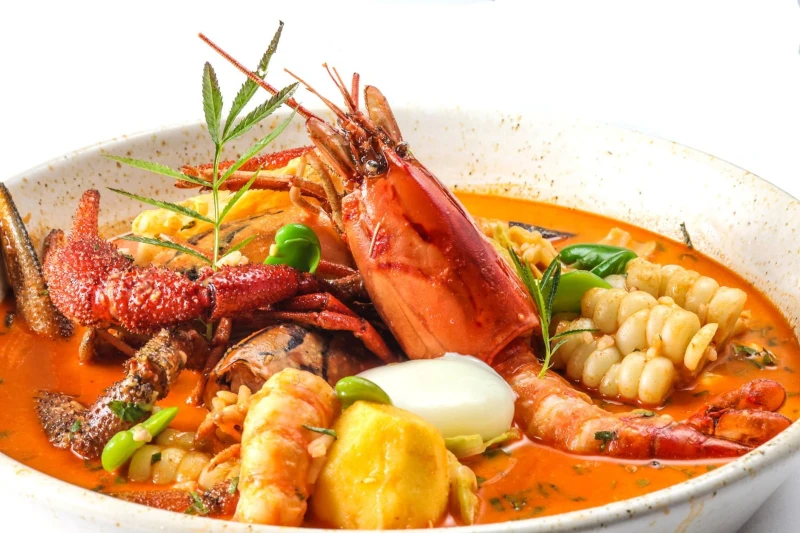
Crafting the perfect bowl: Ingredients and traditional preparation techniques
Creating Chupe de Camarones is a multi-layered culinary process. Like the preparation of Peruvian anticuchos, it requires mastery of ingredients and techniques. Here’s how to craft the perfect bowl.
The ingredient list of Chupe de Camarones is extensive. It includes shrimp, potatoes, Peruvian corn, and Andean cheese. Milk, eggs, and a variety of herbs and spices complete the list. Each ingredient is essential to the dish’s distinctive taste.
First, fresh shrimp is the star of the show. It must be thoroughly cleaned before cooking. The shrimp heads are then simmered to create a rich, savory stock.
Potatoes, a staple in Peruvian cuisine, are added next. They offer a comforting, earthy flavor and a hearty texture to the soup. They’re peeled, diced, and cooked until tender.
The inclusion of Peruvian corn, or ‘choclo’, is significant. It brings sweetness and a delightful crunch to the dish. It’s typically added whole-kernel, enhancing the soup’s visual appeal.
Cheese is the secret ingredient that ties everything together. A traditional Andean cheese, ‘queso fresco’, melts into the soup, adding a creamy richness.
Then comes the milk and eggs. They are whisked in towards the end, contributing to the soup’s creamy, indulgent consistency.
Finally, herbs and spices bring it all together. Garlic, onion, and chili are sautéed to release their aromatic flavors. Oregano and huacatay, a native Peruvian herb, bring in a fresh note.
Preparing Chupe de Camarones is an exercise in layering flavors and textures. Much like Peruvian anticuchos, it’s about the harmonious balance of ingredients. When done right, the resulting soup is a comforting, hearty bowl of Peruvian tradition.

Cultural significance and modern interpretations of Chupe de Camarones
Chupe de Camarones holds a cherished position in Peru’s cultural fabric. It’s not just a dish but a representation of Peru’s culinary regions and history.
Arequipa, the birthplace of this soup, is a city proud of its gastronomic heritage. This dish forms part of its identity, showcasing the city’s abundant seafood and agriculture. The soup is traditionally served during the religious season of Lent, emphasizing its cultural resonance.
But this traditional dish is not confined to Arequipa. Across Peru’s culinary regions, it has found acceptance and adoration. It’s a symbol of Peruvian hospitality, often served to guests and visitors.
Its popularity extends beyond Peru’s borders too. This soup, like ceviche, has become an ambassador of Peruvian cuisine worldwide. It tells a story of Peru’s diverse ecosystems, from the high Andes to the Pacific coast.
Modern chefs have introduced innovative twists to the traditional recipe. Peruvian fusion cuisine experiments with Chupe de Camarones, adding non-traditional elements. The essence, however, remains the same: a comforting, hearty shrimp soup.
Some chefs replace shrimp with other seafood or introduce exotic herbs. Others present the soup deconstructed or in gourmet versions. These modern interpretations pay homage to the original while bringing new flavors to the forefront.
The journey of Chupe de Camarones doesn’t end in the kitchen. It continues in cultural discussions, food festivals, and international culinary stages. As Peru’s culinary scene evolves, Chupe de Camarones carries forward its rich heritage.
Chupe de Camarones embodies the heart of Peruvian cuisine. Its significance lies not only in its delightful flavors but also in its power to unite people. It’s a story of Peru’s vibrant culinary culture, told through a heartwarming bowl of soup.
